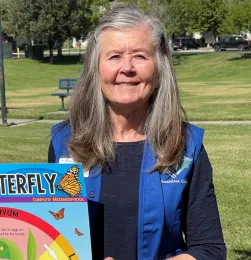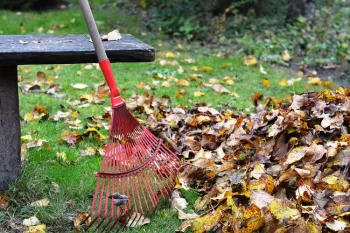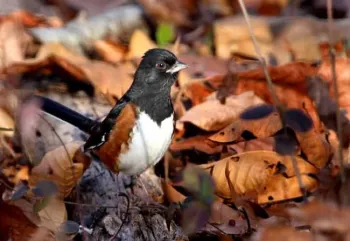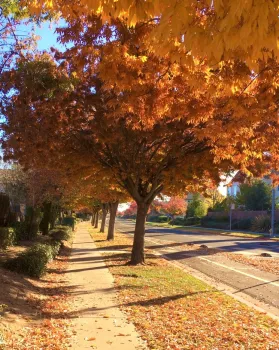
People often rake their leaves and put them out to be picked up as trash. I have always preferred to leave the leaves for my garden.
If you take a walk in a forest, you'll see leaf layers several inches deep around trees and bushes. Fallen leaves have a complex relationship with trees and nature, providing many benefits which can be reproduced to some extent in our gardens.
Natural Mulch

Fallen leaves have the same weed suppression and moisture retention properties of shredded wood mulch—and they're free! Where mulch is desired as a decorative element, what could be more seasonally appropriate than a pile of brightly colored fall leaves? This natural mulch also provides insulating winter cover from cold temperatures for roots, seeds, and bulbs.
A Web of Life in Leaf Litter
Leaf litter isn't just free fertilizer and mulch. It provides food and shelter for a wide variety of living things including spiders, snails, worms, beetles, millipedes, mites, toads, frogs and more—these in turn support mammals, birds, reptiles, and amphibians that rely on these creatures for food.
Detritivores (organisms that eat dead or decaying plants or animals) break up and excrete leaf litter. Fungi and bacteria then take over and complete the recycling process converting these smaller pieces into nutrients which then sustain neighboring plants. They in turn help support biodiversity by becoming food themselves.

Numerous bird species such as robins and towhees forage in the leaf layer searching for insects and other invertebrates to eat.
Raking up leaves and putting them in the trash could have the unintended consequence of removing some of next year's garden butterflies and moths, many of which are pollinators. Most butterflies and moths overwinter in the landscape as an egg, caterpillar, chrysalis, or adult. In all but the warmest climates, they often use leaf litter for winter cover. Fritillaries and wooly bear caterpillars will tuck themselves into a pile of leaves for protection from cold weather and predators. Some Hairstreaks lay their eggs on fallen oak leaves, which become the first food of the caterpillars when they emerge. Swallowtail butterflies disguise their cocoons and chrysalises as dried leaves, blending in with the “real” leaves.
Bumble bees also rely on leaf litter for protection. At the end of summer, mated queen bumble bees burrow an inch or two into the earth to hibernate for winter. An extra thick layer of leaves is welcome protection from the elements.
All of which makes leaf litter an integral part of a complex web of life.
What You Can Do

Composting leaves is a terrific way to recycle and create a nutrient-rich garden soil amendment at the same time. Some gardeners opt for shredding their fall leaves for use in compost piles. Like people who mulch their lawn leaves with a mower, consider leaving some leaves undisturbed in garden beds and lawn edges. If space allows, you could create a leaf pile, allowing it to break down naturally, or add the leaves gradually to your compost pile over time. Such efforts will keep leaf litter critters safe and allow you to benefit from the rich garden gift that falls from the trees above.
While it is ideal to “leave the leaves” permanently—for the benefits mentioned above—if you do decide you need to clean your garden and remove the leaves in spring, try to wait until later in the season, so as to give the critters that have been protected by fallen leaves over the winter time to emerge and depart.
Some gardeners may be concerned that autumn leaves, matted down by rain or snow, could have a negative impact on their perennials. However, a thick layer of leaves provides additional insulation against chilly weather and protects newly planted perennials from frost which could damage tender roots and shoots. Anyone who has spotted fragile spring seedlings popping up in the woods knows that all but the most fragile of plants will erupt through the leaf litter in spring without trouble.
So, leave the leaves. While you can't perfectly emulate a forest, your garden will be healthier and more diversified, you'll help support a vast array of wildlife, and you'll reduce the strain on landfills.
Denise Godbout-Avant has been a UCCE Stanislaus County Master Gardener since July 2020.

